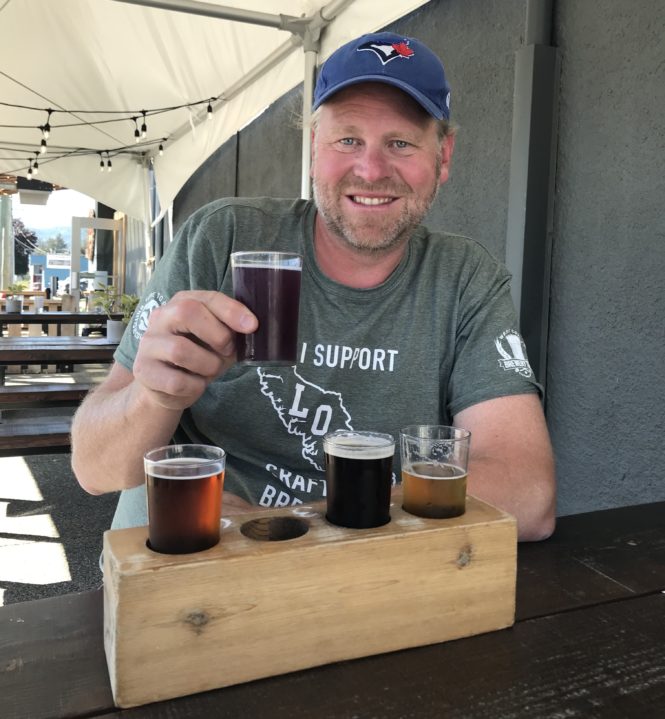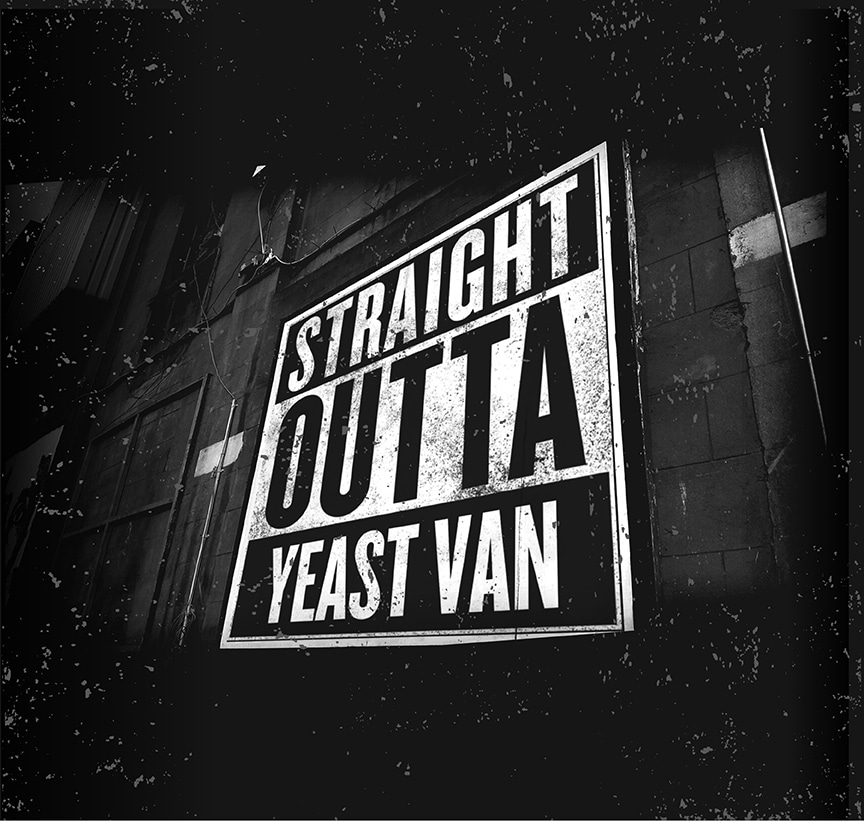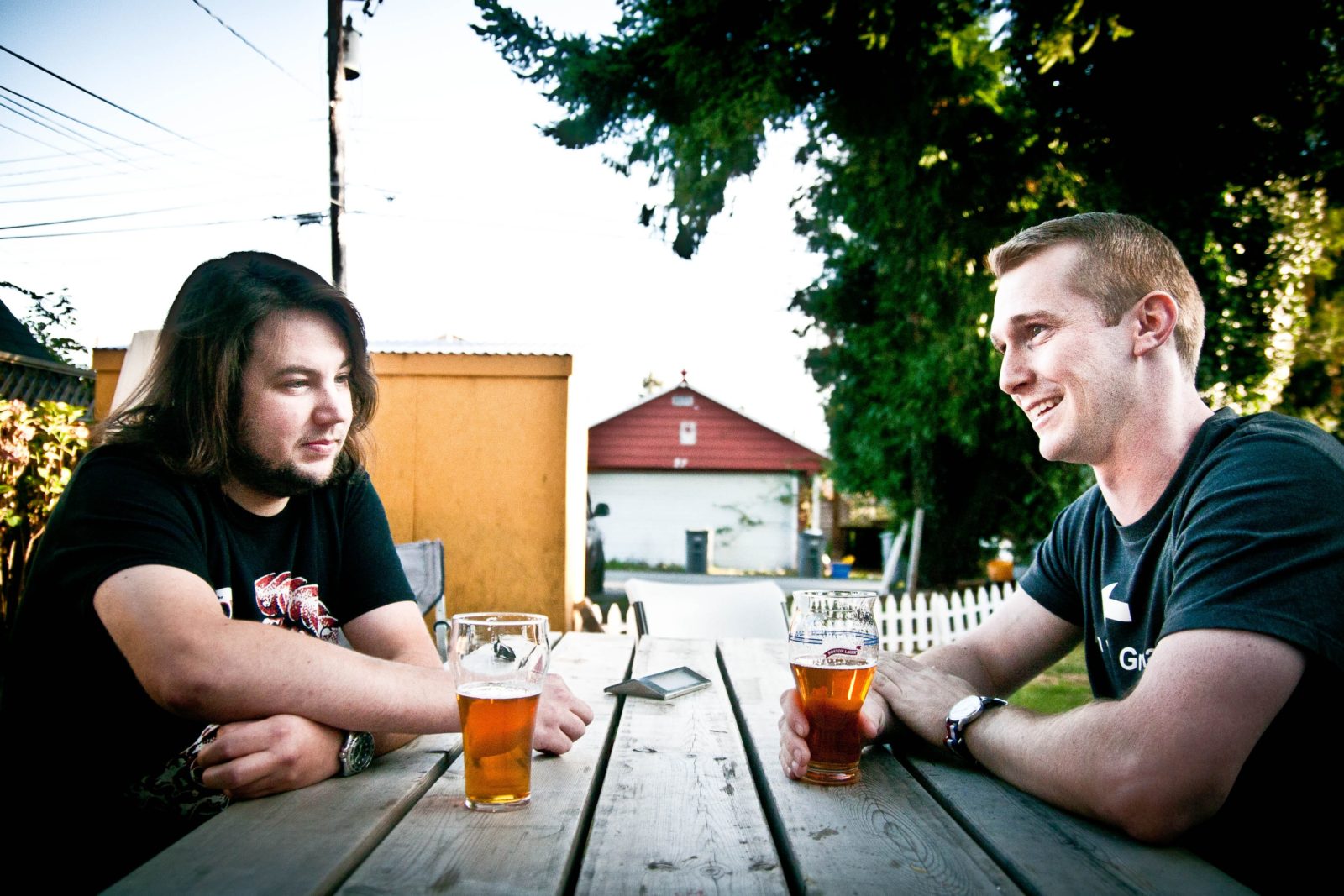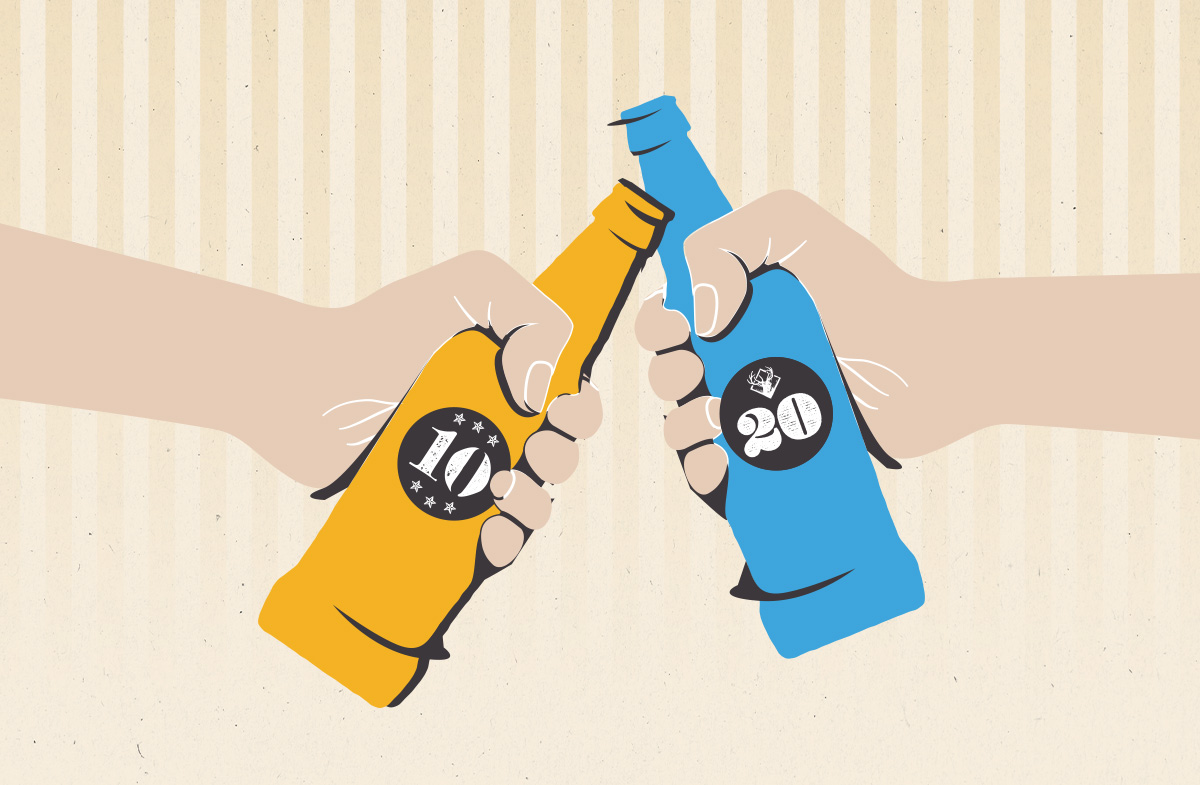
Celebrating milestones during the pandemic sucks. Typically, a brewery turning 10 or 20 years old might put on a big event, but during COVID, not so much. In 2021, two well-known Victoria breweries reached significant milestones with little fanfare: Phillips Brewing turned 20 in August and Hoyne Brewing celebrated 10 years of operation in December.
What follows is part of a great conversation I had with Sean Hoyne and Matt Phillips during a Zoom session in late January (Omicron kept us from meeting up in person). While Phillips Brewing has been around twice as long as Hoyne Brewing, Sean Hoyne got his start brewing at Swans Brewpub in 1989, before moving over to Canoe Brewpub when it opened a few years later, so Hoyne has actually been in the business even longer than Matt Phillips.
Joe Wiebe: Maybe we’ll start off with you, Sean, since you’re the elder statesman here.
Sean Hoyne: What a distinguished honour to be the oldest guy in the room! Well, a couple of months prior to COVID, I got dragged kicking and screaming into the present and I decided to finally put a down payment on a whole canning line. Then, along comes the pandemic. I gathered our entire team and said, “We have two goals. First goal: we all stay healthy. And the second goal is we all keep our jobs.” So we set to work doing that. The canning line began to arrive in bits and pieces. We had nobody to put this thing together—the technicians from Italy couldn’t travel—so we just started doing it ourselves. We did a bunch of Zoom calls. It took us a little while, but we finally got our cans up and running. That’s been a game changer for us because draft has been hit really hard, but we’ve reclaimed some of that ground in can sales.
Joe: Did you do anything to celebrate the anniversary?
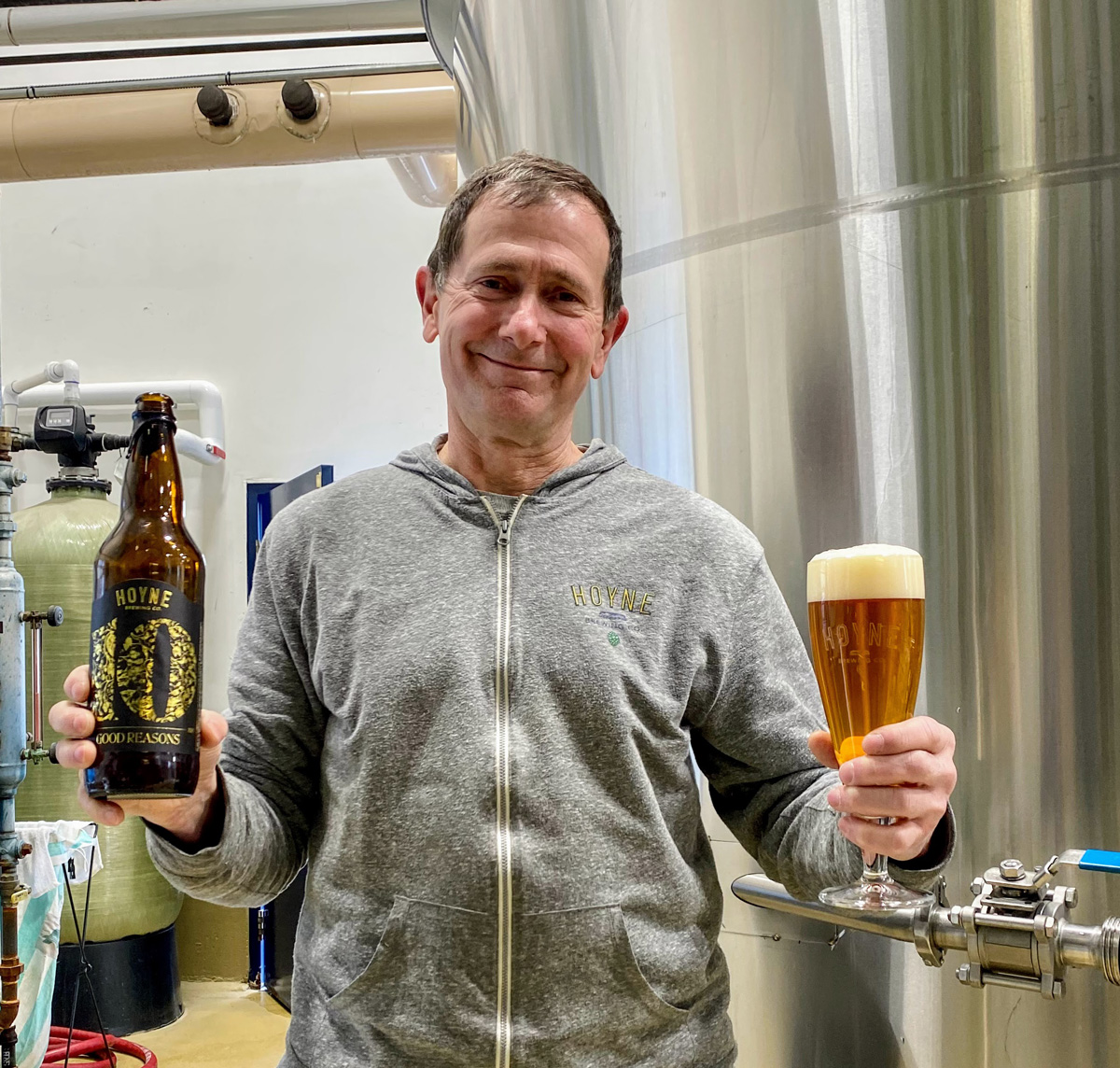
Sean: Yeah, we did, but it hasn’t come out yet. We call it “10 Good Reasons.” It’s a specialty beer along the lines of a Maibock. We brewed it in the beginning of October and it’s been hanging out in our cellar all this time. It’s a really beautiful beer. It’s complex and it’s been aging for a while. I like it a lot.
Joe: Well, Matt, I can imagine how you feel about celebrating your 20th during a pandemic…
Matt: [After much swearing] Ten years, which Sean just passed, was my most memorable anniversary. It was a big party—we invited everybody in, we gave ourselves the old still, we were still immature and stupid. I always thought if we ever made it to 20 it would be bigger, better, more silly… So it was really anticlimactic. That part wasn’t a celebration. The one part that was fun was the beer we put out: the Twenty Point Buck. Through lack of planning and luck, 20 months before turning 20, we had dumped our first barrels of whisky, so we filled them with Blue Buck. It just seemed like the right thing to do. And it aged really nicely. It checked all the boxes because it was made from Island barley that we malted, Blue Buck, which is our brand, and pulled the distillery in.
Joe: OK, let’s go into the Way Way Back Machine and think back to the early days…
Sean: You know, before Frank Appleton passed away we talked about those early days: could we ever have imagined where the industry would have gotten to? And honestly, we couldn’t. In those early days, the number of us microbreweries, as we were called back then, was very sparse so we all supported each other. It was all of us standing up on our soapboxes yelling about how great microbrewed beer is to anybody who would listen. Could I have imagined where I am right now? Not really—I mean that was 33 years ago! I didn’t think I was going to make it to 40, let alone 50 or 60.
Matt: When I look at what it is now, it certainly wasn’t the brewery I set out to make, but it’s better. The bigger you are, the more time you have and the more resources and the more skilled people and the better equipment to make better beer. I used to get that question all the time: how big is too big? And I don’t know, but every time we get bigger it’s better. The beer quality is better. We have more time to experiment with new beers, we can pull in better ingredients, we can get better equipment. I don’t know why we’d put a cap on this.
Sean: I agree 100 per cent with that, Matt. The bigger you get, the more you can afford the right stuff. The amount of money we have invested just in our lab alone! But it allows you to do so much. It’s incredible.
Joe: Is there something that you would say to your younger self?
Sean: When I first started this brewery I had already been brewing for 21 years. We had no
money to get started with so we leveraged everything we had. We were all in. So we needed this to work. Failure was absolutely not an option. Especially because when I opened the brewery I’m 50 years old. So, what I would say to my younger self is that it’s going to be tough, but you’re going to be OK. There’s no guarantees, of course. Honestly, it can fail, but if you’ve got the right ingredients—and I don’t mean brewing ingredients—business ingredients and the right people and the right attitude and the desire to do it, then you stand a pretty good chance of actually surviving those first few years.
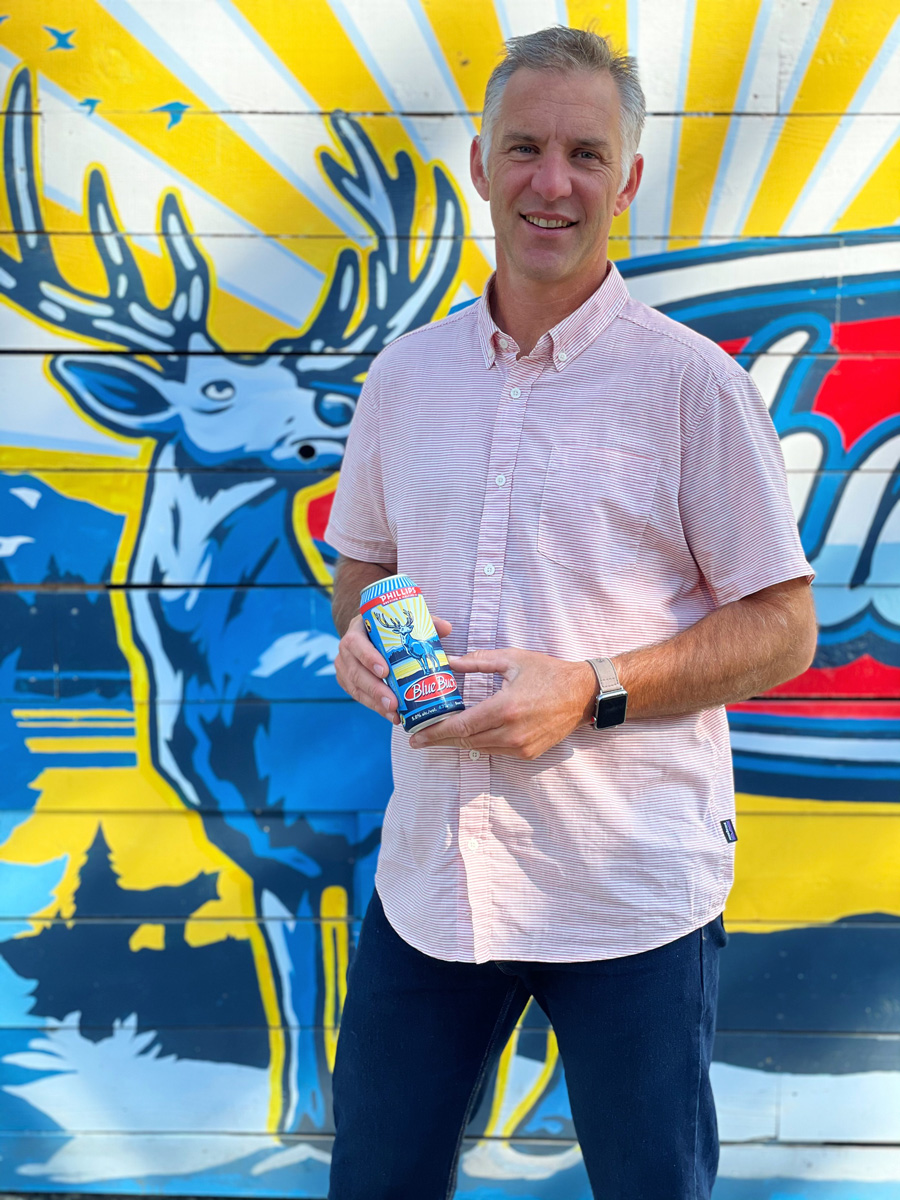
Matt: I started out with a business plan that was doomed to fail and, if I were to tell myself anything, it would be to be open to realizing that it wasn’t working earlier. My original plan was just to do 650s [650-ml bottles], and just boutique, less popular beers—I mean really exotic beers like IPAs, right?! Not so exotic now, but at that point, IPAs were kind of crazy beers. Weird to think of it now. But there just wasn’t a big enough market for it at that point. It was only really when I hit the breakpoint… There’s a long backstory to it, but I needed to get to the point where my business plan was a complete failure, I needed to rethink it. It was still OK to make these beers that I was really passionate about, but I needed to have a wider scope. That’s the reason we’re still here. If I was still pushing 650s I’d probably be pushing up daisies.
Joe: And what are you going to be telling me ten years from now?
Matt: Honestly, if you were to ask me ten years ago, I would never have guessed that the industry would look like it does now. It has changed so much. Back in 2012, 2013, there was such an explosion of new brewers, new interest in beer, regionality. I think the spirit of craft beer has really changed. I don’t think it’s necessarily still about the tangibility that it used to be. Not to say that it’s good, bad or otherwise, just that it’s really changed the lens of what craft beer is. Is it likely that things will change drastically in the next ten years? I’d be shocked if they didn’t.
Sean: When I started in 2011, I remember someone put a microphone in front of my face and said, “Do we really need a new brewery?” I was kind of like, well, I hope so because here comes one. At that time I couldn’t have imagined—I mean how many breweries are there now?
Joe: When you opened there were about 40 in B.C. and now there are about 225.
Sean: That’s just mind boggling. So where is it going to go from here? I think the rate of growth will probably slow down. I think that anyone who’s starting one now will probably at least have a moment’s hesitation, whereas a few years ago there wasn’t even that.
Matt: If we go back to when you and I started, every brewery basically had the same purpose, the same identity, the same beers for that matter. And then [in the last decade] you started to see breweries defining themselves based on regionality and locality. I think I’d be surprised if we don’t see segmentation and breweries really starting to line themselves up more on an identity basis as opposed to a regionality basis. I think as we get to a saturation point, marketing is going to become more and more important.

